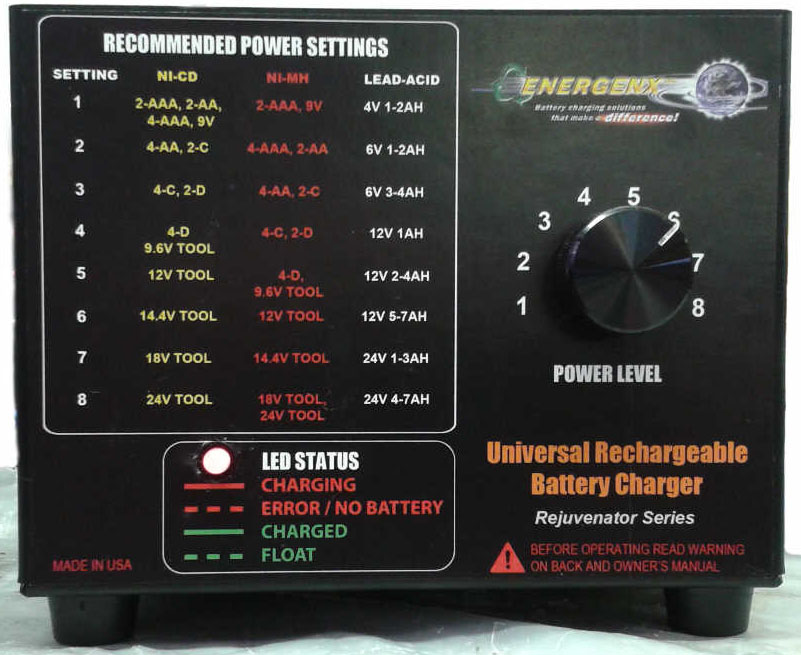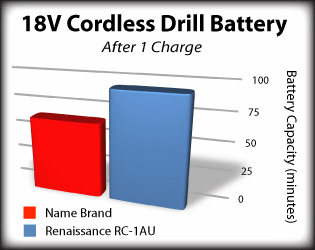THE 1AU IS OUR * MOST POPULAR * CHARGER!
It is the only true Universal Battery Charger on the market.

This is the first truly UNIVERSAL BATTERY CHARGER ever made available to the public.
The 1AU will charge and restore all rechargeable batteries from 1.2 volts up to 24 volts. Besides this, its simple battery connection technology works with almost all battery styles, eliminating the need for special adapters.
Specifically designed for charging Ni-Cd and Ni-MH batteries, the 1AU charger will also charge small lead-acid gel cells, rechargeable alkaline, and other battery types.
Finally, you can keep all of the batteries you have running at peak performance with the 1AU. If you only buy one battery charger in your whole life, this is the one to get! Don't throw those old batteries away until you have given them a second chance with the 1AU.

- Eight power levels to choose from.
- A chart on the top of the unit makes proper power level selection easy.
- Easy to read LED status indicates when the battery is charged.
- Charges anything from 1.5 to 24V up to 7AH. (Most cordless tools are 3-4AH.)
- See owner’s manual for more details.
- Physical - 6"W x 5"H x 8"D - Approx.. 10 lbs.
- *1 Year Warranty
GET YOUR OWN 1AU UNIVERSAL CHARGER REJUVENATOR HERE: ENERGENX 1AU






Comment